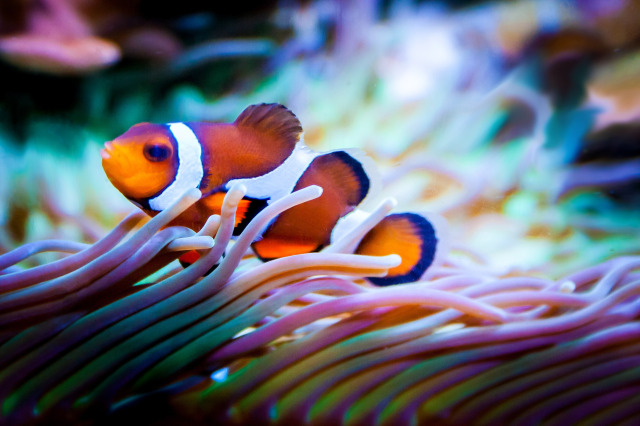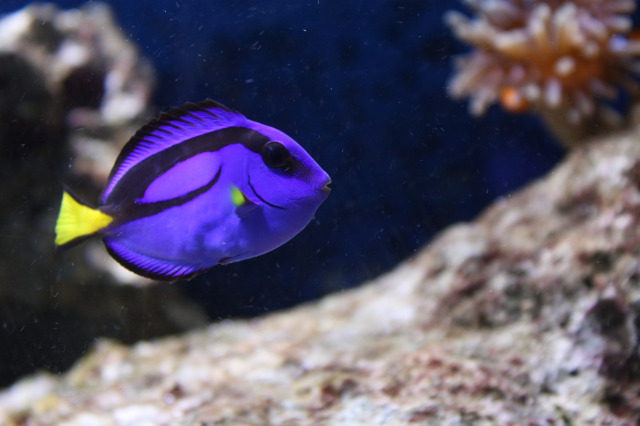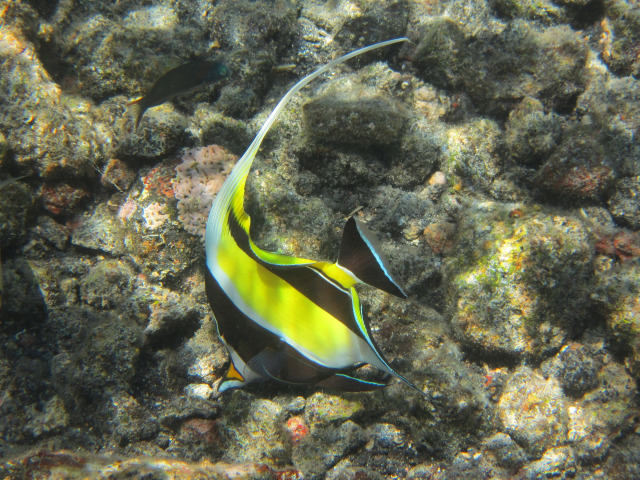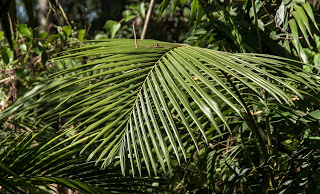One of my favourite movies is Finding Nemo. I just love the way that the marine life of the Great Barrier Reef was bought to life.
Now, just to be clear, I know that the film is not a scientific piece of work. But it still does a great job at showcasing some beautiful species of fish!
Clownfish

The most famous is, of course, Marlin and Nemo the clownfish. There are more than 30 species of clownfish that are found in tropical waters. They are quite a unique fish and live within a strictly dominant hierarchy. Within each family group, only the single dominant female and largest male will reproduce. Interestingly, all clown fish are born male. Males will only change their sex if it will see them become the dominant female in the family group.
When swimming near reefs keep an eye out for these easily recognisable fish. Did you know, the name clownfish comes from their bold black and white stripes. Scientists thought the stripes reminded them of the bold face paint clowns use.
Blue Tang
Onto Marlins trusty sidekick Dory!
Though there is in fact a fish species called the John Dory, you might be surprised to learn that Dory is actually a surgeon fish, or blue tang. Much like Dory in the film, blue tangs are quite social species. They don’t discriminate either and are often found in schools with other species. Blue tangs are quite savvy, playing dead when they are threatened by a predator. They lay flat and still until the threat passes them, like the possum of the ocean.
Moorish Idol
Perhaps one of my favourite characters, and species, from the film is Gill the Moorish idol.
Though not as well known as the clownfish or blue tang, Moorish idols are actually an incredibly common species in Australia. They are very resilient and are found in both shallow waters and waters as deep as 180m. They are brightly striped and are very friendly with other species. Moorish idols use their pointed snout to feed on algae found in cracks and crevices.
The ornate dorsal fin this fish is known for has up to seven spines holding its shape. The elongated crest though beautiful has no real function. However, if damaged, the fish can and will grow it back! The name of the fish is a reference to the Moors of west Africa. They believed that happiness could be found wherever this fish was.
Pacific Cleaner Shrimp
Now, I couldn’t write this without mentioning the comedic genius which is Jacques.
He is a Pacific Cleaner Shrimp, which would explain his knack for cleaning Nemo. Pacific Cleaner Shrimp have a symbiotic cleaning relationship. This means that their cleaning has mutual benefits. They eat the parasites and dead tissue from other fish, and this forms their primary diet.
They are well spread throughout the Great Barrier Reef. They have even been known to hop aboard nearby divers hands and give them a clean. That said, please do not try and grab these creatures or intentionally touch them!
Though Finding Nemo is a fantastical imagination of the Great Barrier Reef, the awesome fish it introduces are very real. I didn’t get to go through all the fish in the film today, but maybe I’ll need to do a write up about them one day too.
Take your chance to meet these awesome marine species of Last Minute Day Tours Great Barrier Reef Diving Tour!
Visit their Great Barrier Reef Tours page for more information!
This article was originally posted: https://lastminutedaytoursaustralia.wordpress.com/2020/01/03/finding-nemo-in-the-great-barrier-reef/








